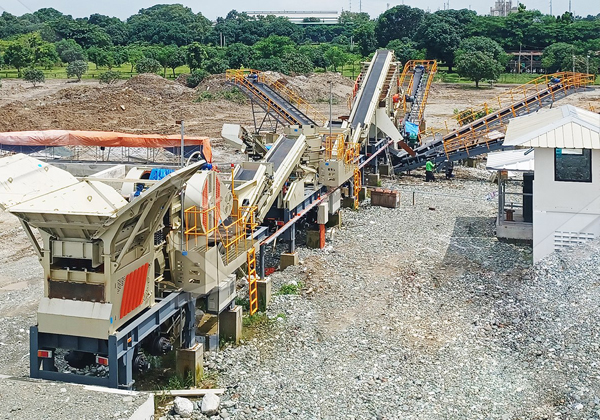A mobile crushing production line is designed to process and crush various types of stone materials into different sizes and specifications for construction and other industrial uses. The flexibility and mobility of such lines are crucial for adapting to different locations and job requirements. Below is a detailed configuration guide for a typical mobile crushing production line:

1. Primary Components
a. Primary Crusher
- Type: Jaw Crusher or Impact Crusher
- Function: The primary crusher is responsible for reducing large, raw materials into manageable sizes for further processing. It should have a high crushing ratio and be capable of handling large feed sizes.
b. Secondary Crusher
- Type: Cone Crusher or Impact Crusher
- Function: The secondary crusher further reduces the size of the material and prepares it for tertiary crushing or for final use. It should offer high throughput and produce uniform-sized aggregate.
c. Tertiary Crusher (optional)
- Type: Vertical Shaft Impact Crusher (VSI) or Cone Crusher
- Function: This is used when fine crushing and shaping of materials is required. It ensures the final product has good cubic shape and fine granularity.
2. Supporting Components
a. Vibrating Feeder
- Function: A vibrating feeder ensures a consistent and controlled flow of material into the crusher. It helps to maximize the efficiency and capacity of the primary crusher.
b. Vibrating Screen
- Function: Vibrating screens are used to separate crushed materials into different size fractions. Multiple screens can be employed for precise sorting and grading of aggregates.
c. Belt Conveyors
- Function: Belt conveyors are essential for transporting materials between different stages of the crushing process. They provide efficient and continuous transfer, reducing manual handling and enhancing productivity.
3. Mobility Features
a. Track or Wheel-Mounted Chassis
- Function: The mobile chassis allows the entire crushing line to be easily relocated to different job sites. Track-mounted systems offer greater stability and mobility over rough terrain, while wheel-mounted systems are better suited for easier, flat terrains.
b. Self-Contained Power Units
- Function: Equipped with diesel generators or electric motors, self-contained power units ensure the crushing line can operate independently of external power sources, enhancing flexibility.
4. Automation and Control Systems
a. Centralized Control Panel
- Function: A centralized control panel enables operators to monitor and control all aspects of the crushing line from a single location. This includes adjusting settings, starting/stopping machinery, and overseeing operational parameters.
b. Automated Feedback Systems
- Function: Sensors and feedback systems can automate adjustments to feeding rates, crusher settings, and conveyor speeds, optimizing the entire operation for efficiency and output quality.
5. Safety and Maintenance Features
a. Dust Suppression Systems
- Function: Dust suppression systems, such as water sprays or mist systems, reduce airborne dust generated during crushing, protecting workers’ health and minimizing environmental impact.
b. Easy Access for Maintenance
- Function: The design should incorporate features that allow for quick and easy access to critical components for routine maintenance and repairs. This includes hinged doors, walkways, and safety rails.
Configuring a mobile crushing production line requires careful consideration of the types of crushers and screens, the mobility and power needs, as well as the automation and safety features. The goal is to create a system that is efficient, versatile, and capable of producing high-quality aggregate with minimal downtime. By selecting the right combination of equipment and ensuring robust support systems are in place, a mobile crushing production line can deliver optimal performance and adaptability across various projects and locations.
